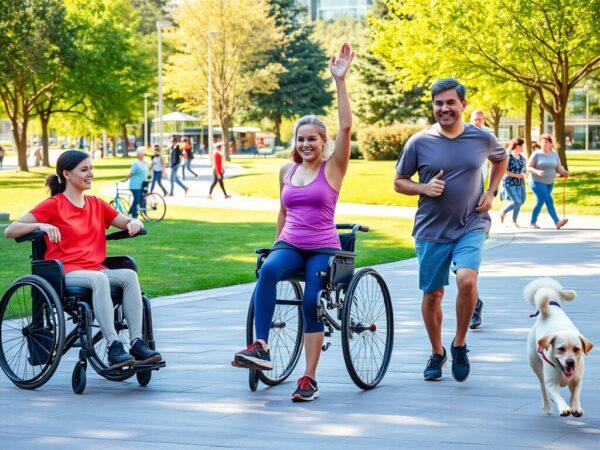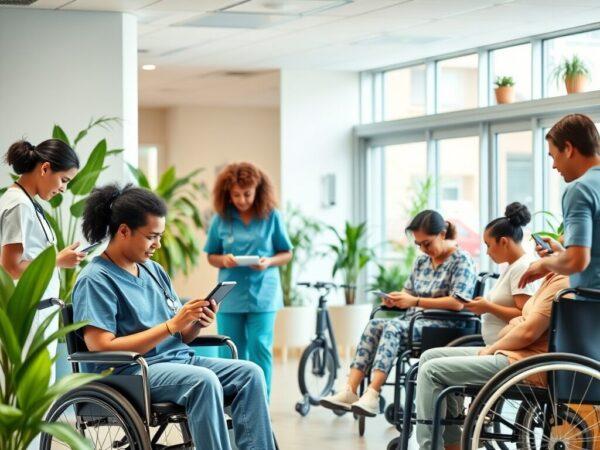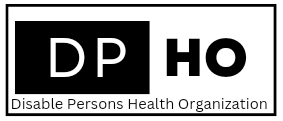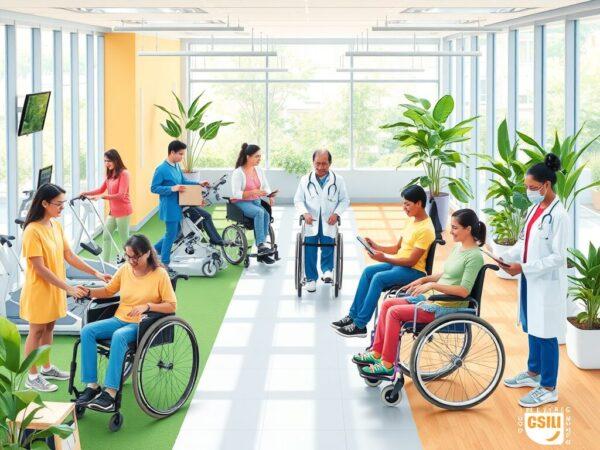
2025 Health Equity: A New Era for Disabled Persons
Support for disabled persons health, 2025. “Explore 2025’s revolution in disabled persons’ health: policies, tech, personalized care, and advocacy transforming access & fostering true health equity. Discover future healthcare.”For too long, systemic barriers—ranging from inaccessible clinics to a lack of understanding among healthcare providers—have created a significant disparity in health metrics.
Policy Shifts & Legislative Frameworks
The year 2025 is anticipated to bring forth significant policy shifts and robust legislative frameworks designed to solidify health equity for persons with disabilities. Governments worldwide, influenced by international conventions and growing advocacy, are recognizing the moral and economic imperative of investing in inclusive healthcare. Key policy initiatives are focusing on mandating accessibility standards for all medical facilities, ensuring that physical environments are navigable and that digital health platforms are universally designed. For instance, several nations are exploring “disability impact assessments” for new health policies, ensuring that the unique needs of disabled populations are considered from inception. Experts like Professor David Chen, an authority on health law and disability rights, highlight, “The legislative landscape is moving from reactive accommodation to proactive inclusion.
Leveraging Technology for Inclusive Health

The advent of 2025 sees technology playing an increasingly pivotal role in fostering inclusive health ecosystems for persons with disabilities. Innovations are not just improving access but are also enhancing the quality and personalization of care. Telemedicine, already accelerated by recent global events, is undergoing significant refinements to better serve diverse needs, including features for visual impairments, hearing loss, and cognitive differences. Remote monitoring devices, often integrated with AI, allow for continuous tracking of vital signs and symptom progression, enabling proactive interventions and reducing the need for frequent, often challenging, in-person visits. Assistive technologies, from advanced prosthetics integrated with neural interfaces to smart home systems that support independent living and health management, are becoming more sophisticated and widely available. As Dr. Anya Sharma, a bioengineer specializing in accessible technology, states, “Technology is dissolving geographical and physical barriers, creating unprecedented opportunities for individuals to manage their health autonomously and engage with healthcare providers on their own terms.” We see examples in apps that convert text to speech for medication instructions or provide visual cues for routine exercises, bridging information gaps.
Community-Led Care Models
In 2025, community-led care models are emerging as a cornerstone of equitable health support for disabled persons, recognizing that health outcomes are deeply intertwined with social determinants and local contexts. These models empower local communities and disabled individuals themselves to co-create healthcare solutions that are culturally sensitive, relevant, and accessible. Rather than a top-down approach, community-led initiatives prioritize peer support networks, local advocacy, and the integration of health services within existing community structures, such as disability centers, religious organizations, or local support groups. For example, some communities are developing ‘health hubs’ within accessible community centers, offering a range of services from preventative screenings to mental health counseling, all delivered by trained professionals who understand the specific needs and nuances of the local disabled population. As a recent report from the World Health Organization emphasizes, “Community engagement is not an optional extra; it is fundamental to achieving sustainable health equity, particularly for marginalized groups.” A powerful example is the “Empower Health Collective” in a rural region, where individuals with disabilities and their caregivers volunteer to run a health literacy program, teaching others how to navigate the healthcare system and advocate for their needs.
The Rise of Personalized Disability Care
For example, an individual with a mobility impairment might receive a tailored exercise program designed by a physiotherapist, integrated with smart home technology that facilitates daily routines, and mental health support focused on their specific psychosocial challenges. t’s not just about what a medical professional prescribes, but about what genuinely works for the individual, promoting their autonomy and dignity.
AI & Assistive Technologies: Transforming Lives
The transformative power of Artificial Intelligence (AI) and advanced assistive technologies is fundamentally reshaping the lives of persons with disabilities in 2025, moving beyond simple aids to sophisticated tools that enhance independence and facilitate health management. AI algorithms are now capable of analyzing vast amounts of health data to predict potential health risks, personalize rehabilitation programs, and even assist in early diagnosis, thereby enabling proactive interventions. For instance, AI-powered predictive analytics can alert caregivers to subtle changes in a person’s behavior or vital signs that might indicate an impending health issue. Assistive technologies, once limited to basic mobility aids, now include neural prosthetics that allow thought-controlled movement, smart sensors that monitor home environments for safety, and communication devices that adapt to various forms of expression. Moreover, AI is being used in the development of highly personalized learning platforms for rehabilitation, adjusting exercises based on real-time performance and progress.
Integrated Wellness & Preventative Strategies
In 2025, integrated wellness and preventative strategies are gaining paramount importance in disability health support, reflecting a proactive shift from reactive treatment to holistic health promotion. This approach recognizes that true well-being for persons with disabilities encompasses physical, mental, emotional, and social dimensions, and that preventing secondary conditions is as crucial as managing primary ones. Preventative strategies include tailored nutritional guidance, accessible physical activity programs, and comprehensive mental health support that addresses the unique stressors faced by disabled individuals. For example, specific exercise routines designed by adaptive sports specialists help maintain cardiovascular health and mobility, preventing common complications like obesity or chronic pain. Dr. Sarah Jenkins, a public health specialist, argues, “Investing in preventative care for disabled persons is not just humanitarian; it’s economically sound, reducing the long-term burden on healthcare systems and improving quality of life exponentially.”
Access to Care: Bridging Gaps for Disabled Lives
Ensuring equitable access to care remains a foundational challenge and a critical focus for disability health in 2025. Despite advancements, individuals with disabilities frequently encounter significant hurdles in obtaining the healthcare they need. Furthermore, attitudinal barriers, stemming from a lack of disability awareness or implicit bias among healthcare providers, can lead to misdiagnosis or inadequate treatment. However, the year 2025 is marked by a concerted, multi-pronged effort to dismantle these obstacles. Initiatives are underway to mandate universal design principles in new and renovated medical spaces, expand telehealth services to remote and underserved populations, and bolster advocacy efforts to strengthen disability rights in healthcare legislation. As stated by a spokesperson for the Global Alliance for Accessible Healthcare, “True access means addressing every layer of barrier, from the curb cut outside the clinic to the communication style inside the consultation room. We are building a future where no one is left behind due to their physical or cognitive differences.” These efforts are not just about compliance but about genuine inclusion, fostering an environment where every disabled person can access timely, appropriate, as stated by a spokesperson for the Global Alliance for Accessible Healthcare, “True access means addressing every layer of barrier, from the curb cut outside the clinic to the communication style inside the consultation room.
Overcoming Physical & Infrastructural Hurdles
The year 2025 sees a renewed commitment to overcoming the persistent physical and infrastructural hurdles that impede access to healthcare for disabled persons. This goes beyond mere compliance with basic accessibility standards, striving for truly universal design in all medical environments. New legislative mandates and funding initiatives are driving the renovation of existing clinics and the construction of new facilities with features like wider doorways, accessible examination tables, adjustable medical equipment, and clear, navigable pathways. For those with visual impairments, tactile paving, clear signage, and audio navigation aids are becoming standard. Experts in inclusive architecture, such as Dr. Robert Lee, emphasize, “Designing for disability isn’t just about ramps; it’s about creating a seamless, dignified experience from arrival to departure, removing all points of friction.” Furthermore, reliable and accessible transportation solutions are being prioritized, including improved paratransit services and integration with ride-sharing platforms that offer accessible vehicle options. Personal stories from patients, such as Sarah, who often had to be lifted onto inaccessible examination beds, highlight the profound impact of these design failures. The focus in 2025 is on auditing existing infrastructure, identifying specific points of inaccessibility, and implementing comprehensive solutions that ensure every person, regardless of their physical abilities, can navigate and utilize healthcare facilities safely and independently. This infrastructural revolution is foundational to achieving true health equity.
Telehealth & Remote Services Expansion
The expansion of telehealth and remote services in 2025 represents a transformative solution for bridging geographical and mobility gaps in healthcare access for persons with disabilities. Building on the accelerated adoption seen in recent years, these services are becoming more sophisticated, user-friendly, and specifically tailored to the diverse needs of the disabled community. Telehealth platforms are now incorporating features like integrated sign language interpreters, text-to-speech functionalities, and adaptive interfaces that cater to various cognitive abilities, ensuring that virtual consultations are truly accessible. This means individuals can receive consultations, follow-up care, mental health support, and even some diagnostic services from the comfort and convenience of their homes, eliminating the need for arduous travel or navigating inaccessible public spaces. As Dr. Emily Clark, a pioneer in digital health for underserved populations, asserts, “Telehealth isn’t a substitute for in-person care, but it’s a powerful equalizer, bringing expert medical attention directly to those who historically faced the greatest barriers.” Furthermore, remote monitoring devices are becoming increasingly sophisticated, allowing healthcare providers to continuously track vital signs, glucose levels, or neurological activity, enabling proactive management and reducing emergency visits. The expansion also includes virtual rehabilitation programs, where therapists can guide exercises and provide feedback remotely, and ensuring continuity of care. The emphasis is on secure, reliable, and privacy-compliant platforms that empower individuals with disabilities to actively manage their health, access specialists, and receive timely medical attention, fundamentally redefining the boundaries of accessible healthcare delivery.
Advocacy & Rights: Ensuring Equitable Access
Advocacy and the robust defense of rights are more crucial than ever in 2025 for ensuring equitable access to healthcare for disabled persons. While policies and technologies advance, the persistent fight for full implementation and enforcement relies heavily on strong advocacy from disability rights organizations, legal experts, and individuals themselves. These advocates play a vital role in challenging discriminatory practices, holding institutions accountable for accessibility failures, and lobbying for stronger legislative protections. For instance, recent legal victories have seen healthcare providers mandated to provide accessible medical information in various formats, recognizing information access as a fundamental right. Campaigns are focusing on raising public awareness about the unique health challenges faced by disabled individuals, combating stigma, and promoting a culture of inclusivity within the medical profession. As a prominent disability advocate, John Davies, remarked, “Rights are not granted; they are claimed and defended. Our continuous advocacy ensures that the principles of equality translate into tangible improvements in healthcare access.” Furthermore, patient advocacy groups are empowering individuals to understand their rights, teaching them how to navigate complex healthcare systems, and providing support for filing complaints when access is denied. These efforts often involve sharing personal stories and empirical data to demonstrate the real-world impact of access barriers. By maintaining relentless pressure on policymakers and healthcare providers, and by educating both the public and the medical community, advocacy in 2025 is not just about defending existing rights but pushing the boundaries for truly comprehensive and equitable healthcare for every person with a disability, ensuring their voices are heard and their needs are met.
Here are 10 FAQs regarding support for disabled persons’ health in 2025:
1. What is the overarching goal for healthcare for disabled persons in 2025?
The primary goal is to achieve genuine health equity, moving beyond just providing access to ensuring equitable health outcomes, recognizing the unique challenges faced by this community. It aims for health outcomes to be determined by the quality of care, not by disability status.
2. What kind of policy changes are expected in 2025 regarding disability health?
Significant policy shifts and robust legislative frameworks are anticipated. These include mandating accessibility standards for medical facilities, reforming discriminatory insurance practices, exploring “disability impact assessments” for new health policies, and implementing mandatory disability sensitivity training for healthcare professionals.
3. How is technology expected to foster inclusive health for disabled persons in 2025?
Technology, particularly refined telemedicine, remote monitoring devices integrated with AI, and advanced assistive technologies (like neural prosthetics and smart home systems), will enhance quality and personalization of care. Virtual reality (VR) and augmented reality (AR) are also being explored for therapeutic purposes.
4. What are “community-led care models” and why are they important in 2025?
Community-led care models empower local communities and disabled individuals to co-create culturally sensitive and accessible healthcare solutions. They prioritize peer support, local advocacy, and integrate health services within existing community structures, fostering ownership and addressing social isolation.
5. What is meant by “personalized disability care” in 2025?
Personalized disability care moves away from standardized protocols to bespoke health plans. These plans are co-created with the individual and their support network, considering their unique condition, lifestyle, social environment, personal goals, and leveraging advanced diagnostics for effective therapeutic pathways.
6. How is AI specifically transforming the lives of persons with disabilities?
AI algorithms analyze health data to predict risks, personalize rehabilitation, and assist in early diagnosis. AI also powers voice assistants for medication management, connects to telehealth, and drives personalized learning platforms, augmenting human capabilities and enhancing independence.
7. What role do integrated wellness and preventative strategies play in 2025 disability health support?
They are gaining paramount importance, shifting from reactive treatment to holistic health promotion. This includes tailored nutritional guidance, accessible physical activity, and comprehensive mental health support, aiming to prevent secondary conditions and promote overall well-being.
8. What are some key physical and infrastructural hurdles being addressed for healthcare access in 2025?
Efforts are focused on universal design in medical environments, including wider doorways, accessible examination tables, adjustable equipment, and clear navigation for all abilities. Reliable and accessible transportation solutions like improved paratransit are also being prioritized.
9. How are telehealth services becoming more accessible for disabled individuals?
Telehealth platforms are incorporating features such as integrated sign language interpreters, text-to-speech functionalities, and adaptive interfaces. This allows individuals to receive consultations and care remotely, overcoming geographical and mobility barriers.
10. Why is advocacy crucial for ensuring equitable healthcare access in 2025?
Advocacy from disability rights organizations, legal experts, and individuals is vital for challenging discriminatory practices, holding institutions accountable for accessibility failures, and lobbying for stronger legislative protections. It ensures that principles of equality translate into tangible improvements and that the voices of disabled persons are heard.



